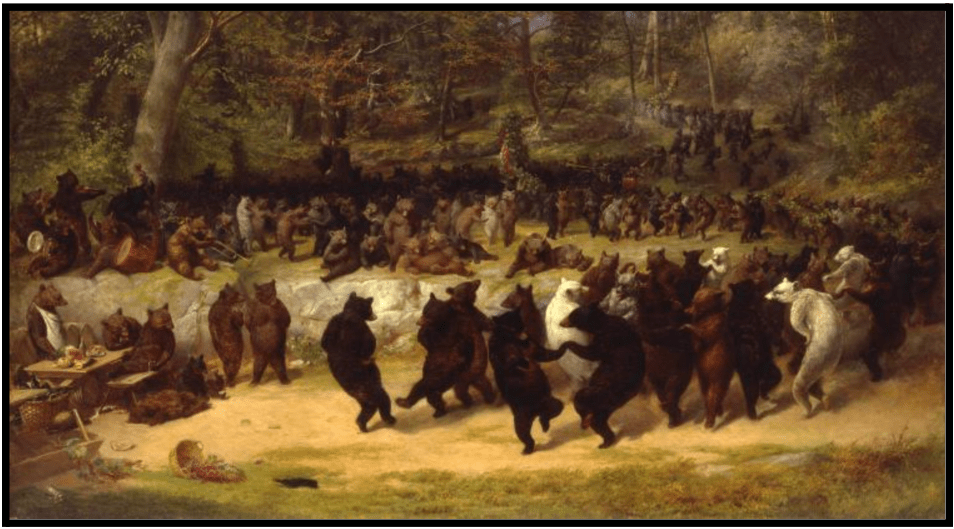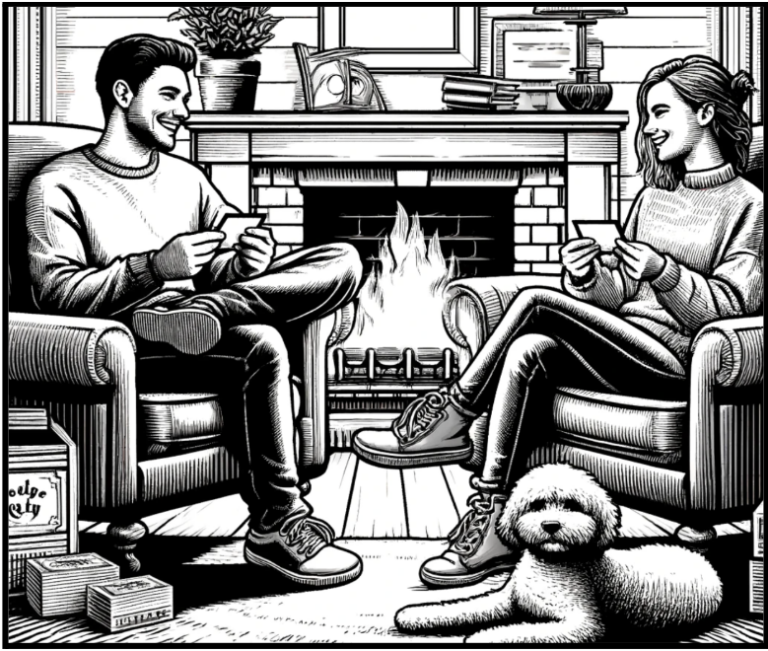Talking Big Ideas.
“Conversation . . . is an unrehearsed intellectual adventure.”
~ Michael Oakeshott
There’s a classic anecdote captured in the memoirs of Lady Randolph Churchill – the influential American-born British socialite and mother to Sir Winston Churchill.
She writes about dining separately with William Gladstone and Benjamin Disraeli. They were two of the most powerful people of her time, both serving as Prime Minister of the United Kingdom. Lady Churchill writes:
When I left the dining room after sitting next to Gladstone, I thought he was the cleverest man in England. But when I sat next to Disraeli, I left feeling that I was the cleverest woman.
Guess whose company she preferred?
Disraeli, of course. He was beloved by many, from the Queen to the commoner, in part because of his excellence as a listener and conversationalist. Kate Murphy says in her book You’re Not Listening that Disraeli mastered the support response, a term coined by sociologist Charles Derber.
For nearly half a century Derber has studied how humans interact and compete with each other – including for attention during conversations. He identified two primary responses people give. The most common is a shift response, where attention is shifted away from the speaker and toward the respondent.
The shift response says, in essence, “Hey, look at me instead! I’m more important and I want people to pay attention to me.” It’s an immature default that we’re all guilty of. My dog Ollie is an expert at this. Every time Maryrose and I hug each other or pet the cat, Ollie comes running up and jumps on us, demanding we shift our attention to him.
Disraeli was a master of the less common support response. This encourages the speaker to help listeners understand at a deeper level.
The support response says, “I value what you’re saying. You’re important, let’s keep paying attention to you.” It’s a mature response offered by people secure enough with themselves to give attention rather than demand it.

For example, imagine you’re at a networking event. You get in line for a drink and start a conversation with someone next to you named Dave:
DAVE: Read anything good lately?
YOU: Actually, last night I read this amazing article on AI.
DAVE: I think the whole AI thing is overblown. I’m reading Beever’s book on D-Day. You know about Operation Neptune? It started off . . . . [SHIFT]
***
DAVE: Read anything good lately?
YOU: Actually, last night I read this amazing article on AI.
DAVE: Nice! Are you into AI? What did the author say? [SUPPORT]
Which conversation would you rather have?
Shift responses reek of what Derber calls conversational narcissism. He writes that this narcissism happens all the time “in informal conversations among friends, family and coworkers.”
Oscar Wilde pillories it in his short story The Remarkable Rocket:
“I was saying,” continued the Rocket, “I was saying – What was I saying?”
“You were talking about yourself,” replied the Roman Candle.
“Of course; I knew I was discussing some interesting subject when I was so rudely interrupted.”
While shift responses make deep connections difficult, support responses are foundational to building lasting relationships. And they make for engaging and authentic conversations.
Think about one of the best conversations you’ve ever had. How did it make you feel? What impact did it have on you?
Quality conversations can be transformational because they empower people to open up. This helps to collide and combine ideas in unpredictable ways. Matt Ridley, one of my favorite writers, puts it this way: “when ideas have sex, innovation is born.”

The Green Dragon Tavern in Boston is known as The Headquarters of the American Revolution. Coffeehouses were crucial to the birth of the European Enlightenment. Silicon Valley emerged from conversations among the Traitorous Eight.
In addition to sparking innovation and ideas, quality conversations secure funding and guidance, offer support and excitement, and hold couples together as well as companies.
It makes sense to hone our conversational skills, especially as the world re-opens and we attend more conferences and networking events.
Of course, we shouldn’t be completely narcissistic and shift every conversational spotlight onto ourselves. But we also can’t stay in complete “support response mode” as it would end up feeling like an interview – or an interrogation.
Authentic conversations have a flow to them. Akin to a dance.
The journalist Mónica Guzmán, protégé to the iconic MIT communications expert Sherry Turkle, offers a useful framework for this conversational dance in her new book I Never Thought of It That Way.

While conversations are probably more art than science, Guzmán says there are four ingredients we can include in them:
- Listen for Meaning: What is the speaker really trying to say?
- Observe: Zoom out and look at the big picture.
- Offer: Share a useful insight.
- Pull: Empower another to contribute.
Let’s call this the Guzmán LOOP Method. Consider an upcoming event you’ll attend. Imagine you’re standing in a circle conversing with a few people. The woman directly to your right is speaking.
Listen for Meaning: What is she really trying to say? What emotions and ideas is she conveying? Can you resist jumping in to share the story that just popped into your head? Instead, support her by asking engaging questions to understand what she’s saying.
Observe: Take a moment to zoom out and look at the whole conversation from an objective vantage point. If it were a dance, how is the overall rhythm and flow? Is anyone hogging the spotlight? Or left standing in the shadows?
Offer: Share an insight with the group. Guzman stresses that this isn’t about shifting the focus onto you, but rather playing a supportive role in the conversation. You’re a team player helping to keep the dancing going in a meaningful way.
Pull: Encourage quiet people to join the dance. This is similar to being a moderator on a panel. Importantly, you’re not trying to force or control the conversation. Rather, you’re adjusting the spotlight to help out various teammates and keep the dance going.
When everyone gets involved, and shares and listens and builds the conversation together, that’s when the magic happens. The saxophonist Stan Getz compares it to a jazz concert: an exhilarating and spontaneous collaborative interaction.
***
![]() IDEA
IDEA
Play a supportive role in the conversation dance.
Test yourself during a conversation this weekend. Offer supportive responses. See if you can get a dance going using Guzmán’s LOOP method:
- Listen for Meaning
- Observe the flow
- Offer insight
- Pull others to join
***
Cheers,
Bob
If you find this useful, please subscribe to our free weekly newsletter.





